International Atomic Energy Agency
The International Atomic Energy Agency (IAEA) is an international organization that seeks to promote the peaceful use of nuclear energy, and to inhibit its use for any military purpose, including nuclear weapons. The IAEA was established as an autonomous organisation on 29 July 1957. Though established independently of the United Nations through its own international treaty, the IAEA Statute,[3] the IAEA reports to both the United Nations General Assembly and Security Council.
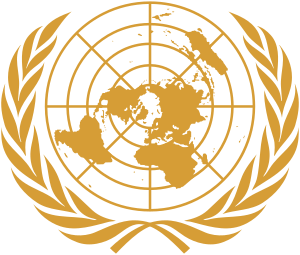 | |
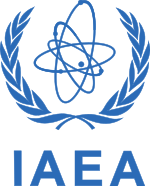 | |
| Abbreviation | IAEA |
|---|---|
| Formation | 29 July 1957 |
| Type | International organization |
| Legal status | Active |
| Headquarters | Vienna, Austria |
Membership | 171 Member States[1] |
Head | Director General of the International Atomic Energy Agency Rafael Grossi |
| Website | www.iaea.org |
.svg.png)
In Europe:
- Vienna - Headquarters
- Geneva - Liaison Office
- Monaco - Laboratory/Research Centre
- Seibersdorf - Laboratory/Research Centre
- Trieste - Laboratory/Research Centre
In North America:
- New York City - Liaison Office
- Toronto - Regional Safeguard Office
In Asia:
- Tokyo - Regional Safeguard Office
The IAEA has its headquarters in Vienna, Austria. The IAEA has two "Regional Safeguards Offices" which are located in Toronto, Canada, and in Tokyo, Japan. The IAEA also has two liaison offices which are located in New York City, United States, and in Geneva, Switzerland. In addition, the IAEA has laboratories and research centers located in Seibersdorf, Austria, in Monaco and in Trieste, Italy.[2]
The IAEA serves as an intergovernmental forum for scientific and technical co-operation in the peaceful use of nuclear technology and nuclear power worldwide. The programs of the IAEA encourage the development of the peaceful applications of nuclear energy, science and technology, provide international safeguards against misuse of nuclear technology and nuclear materials, and promote nuclear safety (including radiation protection) and nuclear security standards and their implementation.
The IAEA and its former Director General, Mohamed ElBaradei, were jointly awarded the Nobel Peace Prize on 7 October 2005. The current Director General is Rafael Grossi, an Argentinian diplomat who previously served as an IAEA's chief of cabinet, whose appointment was approved at the special session of the IAEA's General Conference on 2 December 2019, as the successor of Yukiya Amano, who died in July 2019.
History
In 1953, the President of the United States, Dwight D. Eisenhower, proposed the creation of an international body to both regulate and promote the peaceful use of atomic power (nuclear power), in his Atoms for Peace address to the UN General Assembly.[4][5] In September 1954, the United States proposed to the General Assembly the creation of an international agency to take control of fissile material, which could be used either for nuclear power or for nuclear weapons. This agency would establish a kind of "nuclear bank."
The United States also called for an international scientific conference on all of the peaceful aspects of nuclear power.[6] By November 1954, it had become clear that the Soviet Union would reject any international custody of fissile material if the United States did not agree to a disarmament first, but that a clearing house for nuclear transactions might be possible. From 8 to 20 August 1955, the United Nations held the International Conference on the Peaceful Uses of Atomic Energy in Geneva, Switzerland. In October 1957, a Conference on the IAEA Statute was held at the Headquarters of the United Nations to approve the founding document for the IAEA, which was negotiated in 1955–1957 by a group of twelve countries.[4] The Statute of the IAEA was approved on 23 October 1956 and came into force on 29 July 1957.[7]
Former US Congressman W. Sterling Cole served as the IAEA's first Director General from 1957 to 1961. Cole served only one term, after which the IAEA was headed by two Swedes for nearly four decades: the scientist Sigvard Eklund held the job from 1961 to 1981, followed by former Swedish Foreign Minister Hans Blix, who served from 1981 to 1997. Blix was succeeded as Director General by Mohamed ElBaradei of Egypt, who served until November 2009.[8]
Beginning in 1986, in response to the nuclear reactor explosion and disaster near Chernobyl, Ukraine, the IAEA increased its efforts in the field of nuclear safety.[9] The same happened after the 2011 Fukushima disaster in Fukushima, Japan.[10]
Both the IAEA and its then Director General, ElBaradei, were awarded the Nobel Peace Prize in 2005. In ElBaradei's acceptance speech in Oslo, he stated that only one percent of the money spent on developing new weapons would be enough to feed the entire world, and that, if we hope to escape self-destruction, then nuclear weapons should have no place in our collective conscience, and no role in our security.[11]
On 2 July 2009, Yukiya Amano of Japan was elected as the Director General for the IAEA,[12] defeating Abdul Samad Minty of South Africa and Luis E. Echávarri of Spain. On 3 July 2009, the Board of Governors voted to appoint Yukiya Amano "by acclamation," and IAEA General Conference in September 2009 approved. He took office on 1 December 2009.[13][14][15] After Amano's death,[16] his Chief of Coordination Cornel Feruta of Romania was named Acting Director General.[17][18]
On August 2, 2019, Rafael Grossi was presented as the Argentine candidate to become the Director General of IAEA.[19] On 28 October, 2019, the IAEA Board of Governors held its first vote to elect the new Director General, but none of the candidates secured the two-thirds majority in the 35-member IAEA Board of Governors needed to be elected. The next day, 29 October, the second voting round was held, and Grossi won 24 of the 23 needed votes required for Director General Appointment.[20][21][22] He assumed office on 3 December 2019. Following a special meeting of the IAEA General Conference to approve his appointment, on December 3 Grossi became the first Latin American to head the Agency.[23][24]
Structure and function
General
The IAEA's mission is guided by the interests and needs of Member States, strategic plans and the vision embodied in the IAEA Statute (see below). Three main pillars – or areas of work – underpin the IAEA's mission: Safety and Security; Science and Technology; and Safeguards and Verification.
The IAEA as an autonomous organisation is not under direct control of the UN, but the IAEA does report to both the UN General Assembly and Security Council. Unlike most other specialised international agencies, the IAEA does much of its work with the Security Council, and not with the United Nations Economic and Social Council. The structure and functions of the IAEA are defined by its founding document, the IAEA Statute (see below). The IAEA has three main bodies: the Board of Governors, the General Conference, and the Secretariat.
The IAEA exists to pursue the "safe, secure and peaceful uses of nuclear sciences and technology" (Pillars 2005). The IAEA executes this mission with three main functions: the inspection of existing nuclear facilities to ensure their peaceful use, providing information and developing standards to ensure the safety and security of nuclear facilities, and as a hub for the various fields of science involved in the peaceful applications of nuclear technology.
The IAEA recognises knowledge as the nuclear energy industry's most valuable asset and resource, without which the industry cannot operate safely and economically. Following the IAEA General Conference since 2002 resolutions the Nuclear Knowledge Management, a formal programme was established to address Member States' priorities in the 21st century.[25]
In 2004, the IAEA developed a Programme of Action for Cancer Therapy (PACT). PACT responds to the needs of developing countries to establish, to improve, or to expand radiotherapy treatment programs. The IAEA is raising money to help efforts by its Member States to save lives and to reduce suffering of cancer victims.[26]
The IAEA has established programs to help developing countries in planning to build systematically the capability to manage a nuclear power program, including the Integrated Nuclear Infrastructure Group,[27] which has carried out Integrated Nuclear Infrastructure Review missions in Indonesia, Jordan, Thailand and Vietnam.[28] The IAEA reports that roughly 60 countries are considering how to include nuclear power in their energy plans.[29]
To enhance the sharing of information and experience among IAEA Member States concerning the seismic safety of nuclear facilities, in 2008 the IAEA established the International Seismic Safety Centre. This centre is establishing safety standards and providing for their application in relation to site selection, site evaluation and seismic design.
Board of Governors
The Board of Governors is one of two policy making bodies of the IAEA. The Board consists of 22 member states elected by the General Conference, and at least 10 member states nominated by the outgoing Board. The outgoing Board designates the ten members who are the most advanced in atomic energy technology, plus the most advanced members from any of the following areas that are not represented by the first ten: North America, Latin America, Western Europe, Eastern Europe, Africa, Middle East and South Asia, South East Asia, the Pacific, and the Far East. These members are designated for one year terms. The General Conference elects 22 members from the remaining nations to two-year terms. Eleven are elected each year. The 22 elected members must also represent a stipulated geographic diversity. The 35 Board members for the 2018–2019 period are:[30] Argentina, Armenia, Australia, Azerbaijan, Belgium, Brazil, Canada, Chile, China, Ecuador, Egypt, France, Germany, India, Indonesia, Italy, Japan, Jordan, Kenya, the Republic of Korea, Morocco, the Netherlands, Niger, Pakistan, Portugal, the Russian Federation, Serbia, South Africa, the Sudan, Sweden, Thailand, the United Kingdom of Great Britain and Northern Ireland, the United States of America, Uruguay and the Bolivarian Republic of Venezuela.
The Board, in its five yearly meetings, is responsible for making most of the policy of the IAEA. The Board makes recommendations to the General Conference on IAEA activities and budget, is responsible for publishing IAEA standards and appoints the Director General subject to General Conference approval. Board members each receive one vote. Budget matters require a two-thirds majority. All other matters require only a simple majority. The simple majority also has the power to stipulate issues that will thereafter require a two-thirds majority. Two-thirds of all Board members must be present to call a vote. The Board elects its own chairman.
General Conference
The General Conference is made up of all 171 member states. It meets once a year, typically in September, to approve the actions and budgets passed on from the Board of Governors. The General Conference also approves the nominee for Director General and requests reports from the Board on issues in question (Statute). Each member receives one vote. Issues of budget, Statute amendment and suspension of a member's privileges require a two- thirds majority and all other issues require a simple majority. Similar to the Board, the General Conference can, by simple majority, designate issues to require a two- thirds majority. The General Conference elects a President at each annual meeting to facilitate an effective meeting. The President only serves for the duration of the session (Statute).
The main function of the General Conference is to serve as a forum for debate on current issues and policies. Any of the other IAEA organs, the Director General, the Board and member states can table issues to be discussed by the General Conference (IAEA Primer). This function of the General Conference is almost identical to the General Assembly of the United Nations.
Secretariat
The Secretariat is the professional and general service staff of the IAEA. The Secretariat is headed by the Director General. The Director General is responsible for enforcement of the actions passed by the Board of Governors and the General Conference. The Director General is selected by the Board and approved by the General Conference for renewable four-year terms. The Director General oversees six departments that do the actual work in carrying out the policies of the IAEA: Nuclear Energy, Nuclear Safety and Security, Nuclear Sciences and Applications, Safeguards, Technical Cooperation, and Management.
The IAEA budget is in two parts. The regular budget funds most activities of the IAEA and is assessed to each member nation (€344 million in 2014).[31] The Technical Cooperation Fund is funded by voluntary contributions with a general target in the US$90 million range.[31]
Missions
The IAEA is generally described as having three main missions:
- Peaceful uses: Promoting the peaceful uses of nuclear energy by its member states,
- Safeguards: Implementing safeguards to verify that nuclear energy is not used for military purposes, and
- Nuclear safety: Promoting high standards for nuclear safety.[32]
Peaceful uses
According to Article II of the IAEA Statute, the objective of the IAEA is "to accelerate and enlarge the contribution of atomic energy to peace, health and prosperity throughout the world." Its primary functions in this area, according to Article III, are to encourage research and development, to secure or provide materials, services, equipment and facilities for Member States, to foster exchange of scientific and technical information and training.[3]
Three of the IAEA's six Departments are principally charged with promoting the peaceful uses of nuclear energy. The Department of Nuclear Energy focuses on providing advice and services to Member States on nuclear power and the nuclear fuel cycle.[33] The Department of Nuclear Sciences and Applications focuses on the use of non-power nuclear and isotope techniques to help IAEA Member States in the areas of water, energy, health, biodiversity, and agriculture.[34] The Department of Technical Cooperation provides direct assistance to IAEA Member States, through national, regional, and inter-regional projects through training, expert missions, scientific exchanges, and provision of equipment.[35]
Safeguards
Article II of the IAEA Statute defines the Agency's twin objectives as promoting peaceful uses of atomic energy and "ensur[ing], so far as it is able, that assistance provided by it or at its request or under its supervision or control is not used in such a way as to further any military purpose." To do this, the IAEA is authorised in Article III.A.5 of the Statute "to establish and administer safeguards designed to ensure that special fissionable and other materials, services, equipment, facilities, and information made available by the Agency or at its request or under its supervision or control are not used in such a way as to further any military purpose; and to apply safeguards, at the request of the parties, to any bilateral or multilateral arrangement, or at the request of a State, to any of that State's activities in the field of atomic energy."[3]
The Department of Safeguards is responsible for carrying out this mission, through technical measures designed to verify the correctness and completeness of states' nuclear declarations.[36]
Nuclear safety

The IAEA classifies safety as one of its top three priorities. It spends 8.9 percent of its 352 million-euro ($469 million) regular budget in 2011 on making plants secure from accidents. Its resources are used on the other two priorities: technical co-operation and preventing nuclear weapons proliferation.[37]
The IAEA itself says that, beginning in 1986, in response to the nuclear reactor explosion and disaster near Chernobyl, Ukraine, the IAEA redoubled its efforts in the field of nuclear safety.[9] The IAEA says that the same happened after the Fukushima disaster in Fukushima, Japan.[10]
In June 2011, the IAEA chief said he had "broad support for his plan to strengthen international safety checks on nuclear power plants to help avoid any repeat of Japan's Fukushima crisis". Peer-reviewed safety checks on reactors worldwide, organised by the IAEA, have been proposed.[38]
Criticism
.jpg)
In 2011, Russian nuclear accident specialist Iouli Andreev was critical of the response to Fukushima, and says that the IAEA did not learn from the 1986 Chernobyl disaster. He has accused the IAEA and corporations of "wilfully ignoring lessons from the world's worst nuclear accident 25 years ago to protect the industry's expansion".[39] The IAEA's role "as an advocate for nuclear power has made it a target for protests".[40]
The journal Nature has reported that the IAEA response to the 2011 Fukushima Daiichi nuclear disaster in Japan was "sluggish and sometimes confusing", drawing calls for the agency to "take a more proactive role in nuclear safety". But nuclear experts say that the agency's complicated mandate and the constraints imposed by its member states mean that reforms will not happen quickly or easily, although its INES "emergency scale is very likely to be revisited" given the confusing way in which it was used in Japan.[40]
Some scientists say that the Fukushima nuclear accidents have revealed that the nuclear industry lacks sufficient oversight, leading to renewed calls to redefine the mandate of the IAEA so that it can better police nuclear power plants worldwide.[41] There are several problems with the IAEA says Najmedin Meshkati of University of Southern California:
It recommends safety standards, but member states are not required to comply; it promotes nuclear energy, but it also monitors nuclear use; it is the sole global organisation overseeing the nuclear energy industry, yet it is also weighed down by checking compliance with the Nuclear Non-Proliferation Treaty (NPT).[41]
In 2011, the journal Nature reported that the International Atomic Energy Agency should be strengthened to make independent assessments of nuclear safety and that "the public would be better served by an IAEA more able to deliver frank and independent assessments of nuclear crises as they unfold".[42]
Membership

The process of joining the IAEA is fairly simple.[43] Normally, a State would notify the Director General of its desire to join, and the Director would submit the application to the Board for consideration. If the Board recommends approval, and the General Conference approves the application for membership, the State must then submit its instrument of acceptance of the IAEA Statute to the United States, which functions as the depositary Government for the IAEA Statute. The State is considered a member when its acceptance letter is deposited. The United States then informs the IAEA, which notifies other IAEA Member States. Signature and ratification of the Nuclear Non-Proliferation Treaty (NPT) are not preconditions for membership in the IAEA.
The IAEA has 171 member states.[44] Most UN members and the Holy See are Member States of the IAEA. Non-member states Cape Verde (2007), Tonga (2011), Comoros (2014) and Gambia (2016) have been approved for membership and will become a Member State if they deposit the necessary legal instruments.[44]
Four states have withdrawn from the IAEA. North Korea was a Member State from 1974 to 1994, but withdrew after the Board of Governors found it in non-compliance with its safeguards agreement and suspended most technical co-operation.[45] Nicaragua became a member in 1957, withdrew its membership in 1970, and rejoined in 1977,[46][47] Honduras joined in 1957, withdrew in 1967, and rejoined in 2003,[48] while Cambodia joined in 1958, withdrew in 2003, and rejoined in 2009.[49][50][51]
Regional Cooperative Agreements
There are four regional cooperative areas within IAEA, that share information, and organize conferences within their regions:
AFRA
The African Regional Cooperative Agreement for Research, Development and Training Related to Nuclear Science and Technology (AFRA):[52]







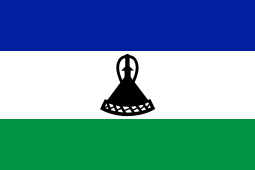





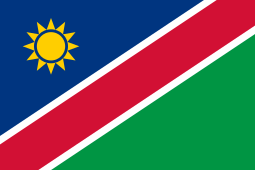




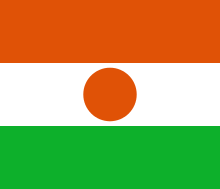






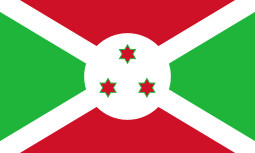





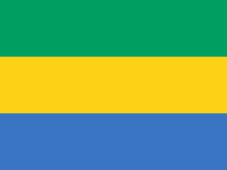
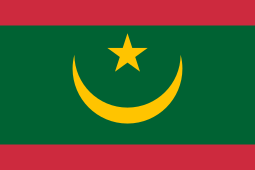


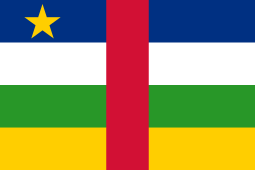



ARASIA
Cooperative Agreement for Arab States in Asia for Research, Development and Training related to Nuclear Science and Technology (ARASIA):[53]
RCA
Regional Cooperative Agreement for Research, Development and Training Related to Nuclear Science and Technology for Asia and the Pacific (RCA):[54]
ARCAL
Cooperation Agreement for the Promotion of Nuclear Science and Technology in Latin America and the Caribbean (ARCAL):[55]
List of Directors General
| Name | Nationality | Duration | Duration (years) |
|---|---|---|---|
| W. Sterling Cole | 1 December 1957 – 30 November 1961 | 4 | |
| Sigvard Eklund | 1 December 1961 – 30 November 1981 | 20 | |
| Hans Blix | 1 December 1981 – 30 November 1997 | 16 | |
| Mohamed ElBaradei | 1 December 1997 – 30 November 2009 | 12 | |
| Yukiya Amano | 1 December 2009 – 18 July 2019 | 9 | |
| Rafael Grossi | 3 December 2019 – |
Publications
Typically issued in July each year, the IAEA Annual Report summarizes and highlights developments over the past year in major areas of the Agency's work. It includes a summary of major issues, activities, and achievements, and status tables and graphs related to safeguards, safety, and science and technology.[56]
See also
- Nuclear ambiguity
- European Organization for Nuclear Research
- Global Initiative to Combat Nuclear Terrorism
- IAEA Areas
- Institute of Nuclear Materials Management
- International Energy Agency
- International reaction to the Fukushima Daiichi nuclear disaster
- Lists of nuclear disasters and radioactive incidents
- Nuclear Energy Agency
- OPANAL
- Proliferation Security Initiative
- United Nations Atomic Energy Commission
- International Radiation Protection Association
- World Association of Nuclear Operators
- World Nuclear Association
![]()
![]()
References
Notes
- https://www.iaea.org/about/governance/list-of-member-states
- "IAEA Offices and Contact Information". International Atomic Energy Agency. International Atomic Energy Agency. n.d. Retrieved 29 November 2018.
- "Statute of the IAEA". IAEA. Retrieved 16 November 2013.
- Fischer, David (1997). History of the International Atomic Energy Agency: The First Forty Years (PDF). ISBN 978-92-0-102397-1.
- Brittain, John (22 June 2015). "The International Atomic Energy Agency: Linking Nuclear Science and Diplomacy". Science and Diplomacy.
- William Burr, ed. (26 October 2017). "60th Anniversary of the International Atomic Energy Agency". National Security Archive. Retrieved 2 August 2018.
- "About the Statute of the IAEA". IAEA.
- "About the IAEA: Former DG's". IAEA.
- Fischer, David (1997). History of the International Atomic Energy Agency: The First Forty Years (PDF). Vienna, Austria: International Atomic Energy Agency. pp. 2, 108–109. ISBN 978-92-0-102397-1.
The Three Mile Island accident and especially the Chernobyl disaster persuaded governments to strengthen the IAEA's role in enhancing nuclear safety.
- "IAEA Nuclear Safety Action Plan Approved by General Conference". International Atomic Energy Agency. Retrieved 2 November 2013.
- ElBaradei, Mohamed (10 December 2005). "The Nobel Lecture". IAEA. Archived from the original on 22 September 2012. Retrieved 16 November 2013.
- "Japanese Diplomat Elected U.N. Nuclear Chief". The New York Times. 2 July 2009. Archived from the original on 11 May 2011.
- "Amano in the frame for IAEA leadership". World Nuclear News. 2 July 2009. Retrieved 2 July 2009.
- "Yukiya Amano says 'very pleased' at IAEA election". The News. 2 July 2009. Archived from the original on 11 May 2011. Retrieved 2 July 2009.
- "Japan envoy wins UN nuclear post". BBC. 2 July 2009. Retrieved 2 July 2009.
- Announcement, IAEA, 22 July 2019.
- Designation of an Acting Director General, IAEA, 25 July 2019
- Acting Director General, IAEA.
- "Faurie presentará al candidato argentino para liderar el mayor organismo mundial en materia nuclear". Ministry of Foreign Affairs and Worship. 2 August 2019. Retrieved 30 October 2019.
- "Argentina's Rafael Grossi elected head of UN's nuclear watchdog". The Times of Israel. 29 October 2019. Retrieved 30 October 2019.
- "El argentino Rafael Grossi, nuevo director general del OIEA" (in Spanish). Sputnik (news agency). 29 October 2019. Retrieved 30 October 2019.
- "El argentino Rafael Grossi dirigirá el órgano de control de energía nuclear de la ONU" (in Spanish). Perfil. 29 October 2019. Retrieved 30 October 2019.
- IAEA: Rafael Mariano Grossi to Assume Office as Director General on 3 December, IAEA Press Release 46/2019, 2 December 2019.
- "Rafael Mariano Grossi". International Atomic Energy Agency. Retrieved 11 February 2020.
- IAEA Nuclear Knowledge Management Programme
- "Programme of Action for Cancer Therapy". IAEA. Retrieved 16 November 2013.
- Nuclear Power Infrastructure, the Integrated Nuclear Infrastructure Group (INIG), International Atomic Energy Agency.
- "IAEA Ready to Help Build Nuclear Power Plant Indonesia". Trendingtech.info. Archived from the original on 1 January 2011.
- IAEA Highlights in 2010, A Retrospective View of Year's Major Events.
- "The Board of Governors is one of the two policy-making bodies of the IAEA, along with the annual General Conference of IAEA Member States". www.iaea.org. 8 June 2016.
- "IAEA Regular Budget for 2014". Retrieved 7 June 2014.
- "The IAEA Mission Statement". IAEA. Retrieved 29 January 2012.
- "About the Nuclear Energy Department". IAEA. Retrieved 29 January 2012.
- "Nuclear Techniques for Development and Environmental Protection". IAEA. Retrieved 29 January 2012.
- "About Technical Cooperation". IAEA. Retrieved 29 January 2012.
- "What We Do". IAEA. Retrieved 29 January 2012.
- Jonathan Tirone (9 December 2011). "UN Atomic Agency Funds Anti-Terrorism, Not Safety". Bloomberg.
- Sylvia Westall and Fredrik Dahl (24 June 2011). "IAEA Head Sees Wide Support for Stricter Nuclear Plant Safety". Reuters.
- Michael Shields (15 March 2011). "Chernobyl clean-up expert slams Japan, IAEA". Reuters.
- Geoff Brumfiel (26 April 2011). "Nuclear agency faces reform calls". Nature.
- Stephen Kurczy (17 March 2011). "Japan nuclear crisis sparks calls for IAEA reform". The Christian Science Monitor.
- "A watchdog with bite". Nature. 472 (7344): 389. 28 April 2011. doi:10.1038/472389a.
- "Process of becoming a member state of the IAEA". IAEA. Retrieved 16 November 2013.
- "Member States of the IAEA". International Atomic Energy Agency. Retrieved 16 September 2013.
- "NFCIRC/447 – The Withdrawal of the Democratic People's Republic of Korea from the International Atomic Energy Agency" (PDF). International Atomic Energy Agency. 21 June 1994. Retrieved 16 January 2014.
- "The Members of the Agency" (PDF). International Atomic Energy Agency. 10 February 2005. Retrieved 3 November 2014.
- "Actions taken by states in connection with the Statute" (PDF). International Atomic Energy Agency. 9 July 1971. Retrieved 14 February 2015.
- "Actions taken by states in connection with the Statute" (PDF). International Atomic Energy Agency. 18 September 1967. Retrieved 14 February 2015.
- "Cambodia, Kingdom of". International Atomic Energy Agency. Retrieved 10 September 2013.
- "The Members of the Agency" (PDF). International Atomic Energy Agency. 6 May 2003. Retrieved 14 February 2015.
- "The Members of the Agency" (PDF). International Atomic Energy Agency. 9 December 2009. Retrieved 3 November 2014.
- "List of States". www.afra-iaea.org.dz. AFRA - IAEA. Archived from the original on 18 May 2017. Retrieved 20 April 2017.
- "Our Work: ARASIA". www.iaea.org. Retrieved 20 April 2017.
- "Our Work: RCA". www.iaea.org. International Atomic Energy Agency. Retrieved 20 April 2017.
- "Miembros(Members) ARCAL". www.arcal-lac.org (in Spanish). arcal-lac. Retrieved 20 April 2017.
- https://www.iaea.org/publications/reports%7Cwork=IAEA
External links
| Wikimedia Commons has media related to International Atomic Energy Agency. |
| Wikisource has original text related to this article: |
- International Atomic Energy Agency Official Website
- NUCLEUS – The IAEA Nuclear Knowledge and Information Portal
- Official IAEA YouTube Channel
- In Focus : IAEA and Iran
- IAEA Bulletin
- Agreement on the Privileges and Immunities of the International Atomic Energy Agency, 1 July 1959
- A Pictorial History of "Atoms for Peace", ISBN 978-92-0-103807-4
- IAEA Department of Technical Cooperation website
- Programme of Action for Cancer Therapy (PACT) – Comprehensive Cancer Control Information and Fighting Cancer in Developing Countries
- International Nuclear Library Network (INLN)
- The Woodrow Wilson Center's Nuclear Proliferation International History Project or NPIHP is a global network of individuals and institutions engaged in the study of international nuclear history through archival documents, oral history interviews and other empirical sources.
| Awards and achievements | ||
|---|---|---|
| Preceded by Wangari Muta Maathai |
Nobel Peace Prize Laureate with Mohamed ElBaradei 2005 |
Succeeded by Grameen Bank and Muhammad Yunus |
